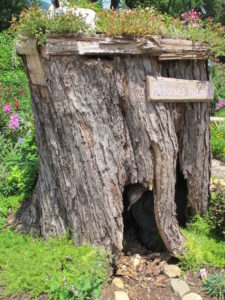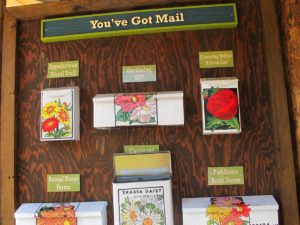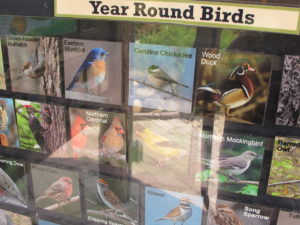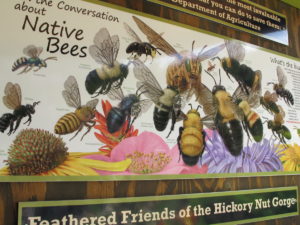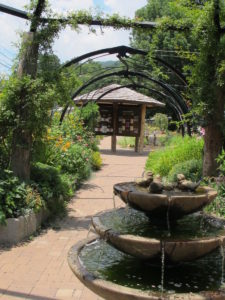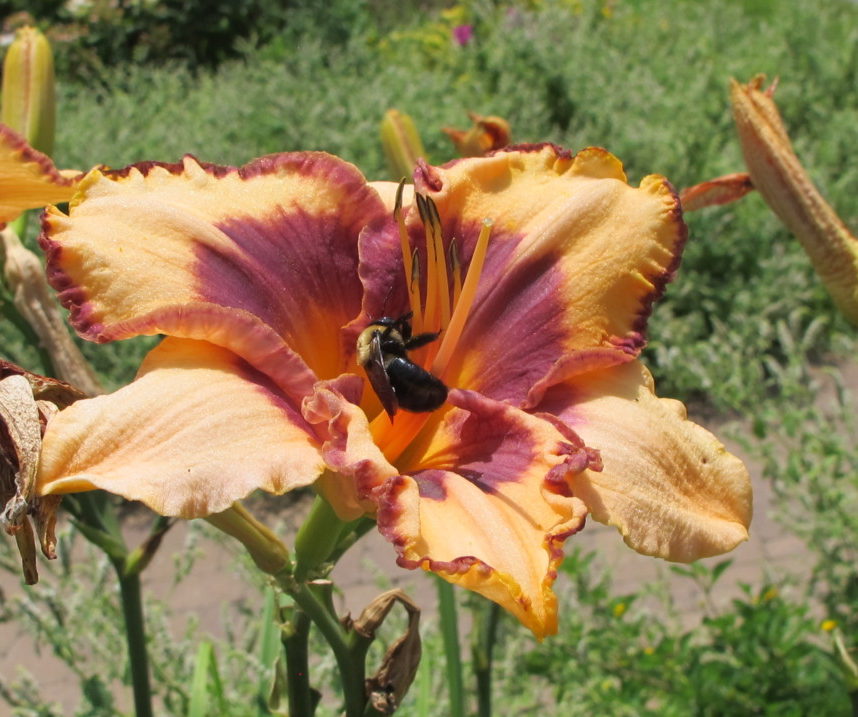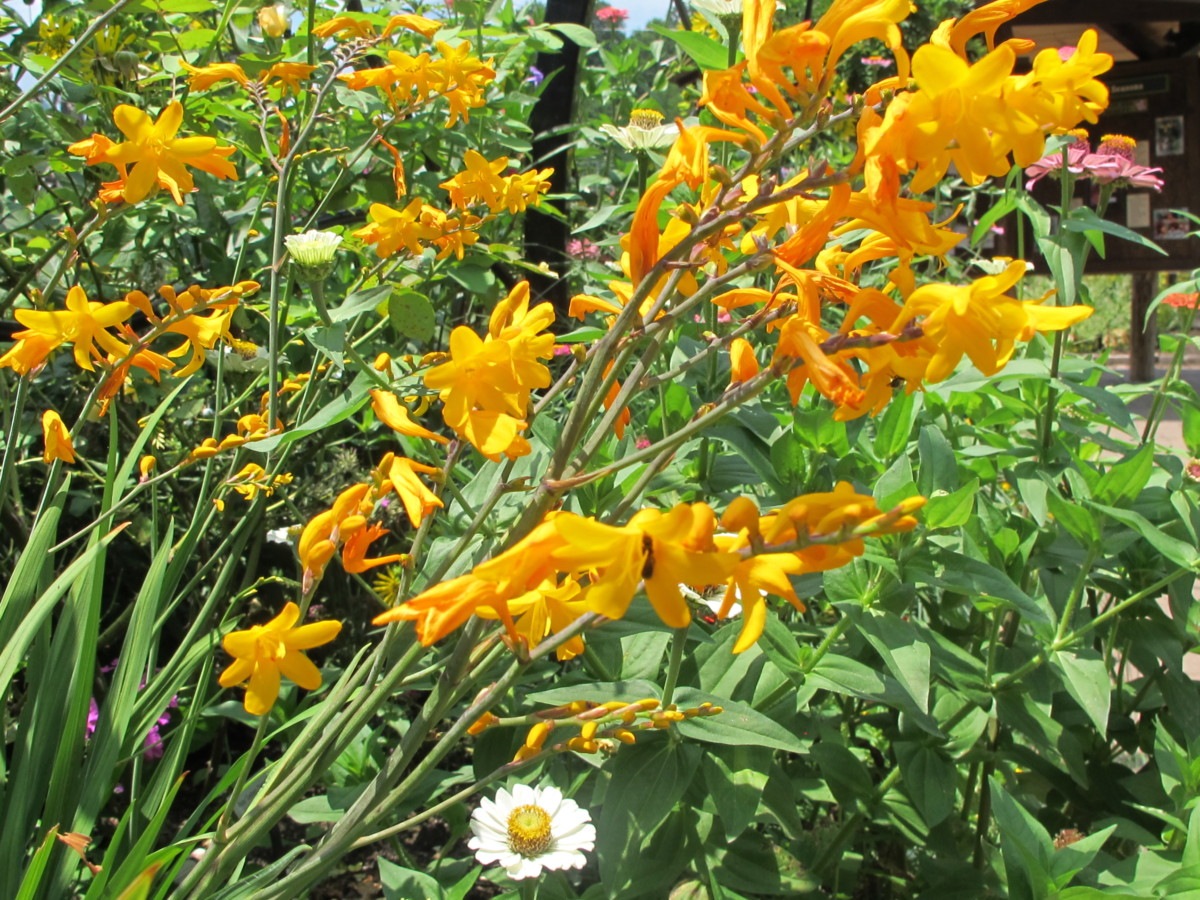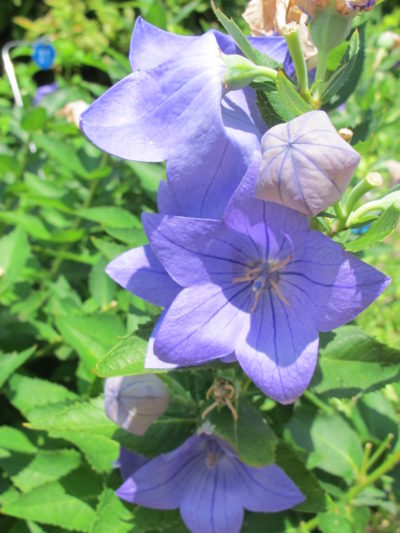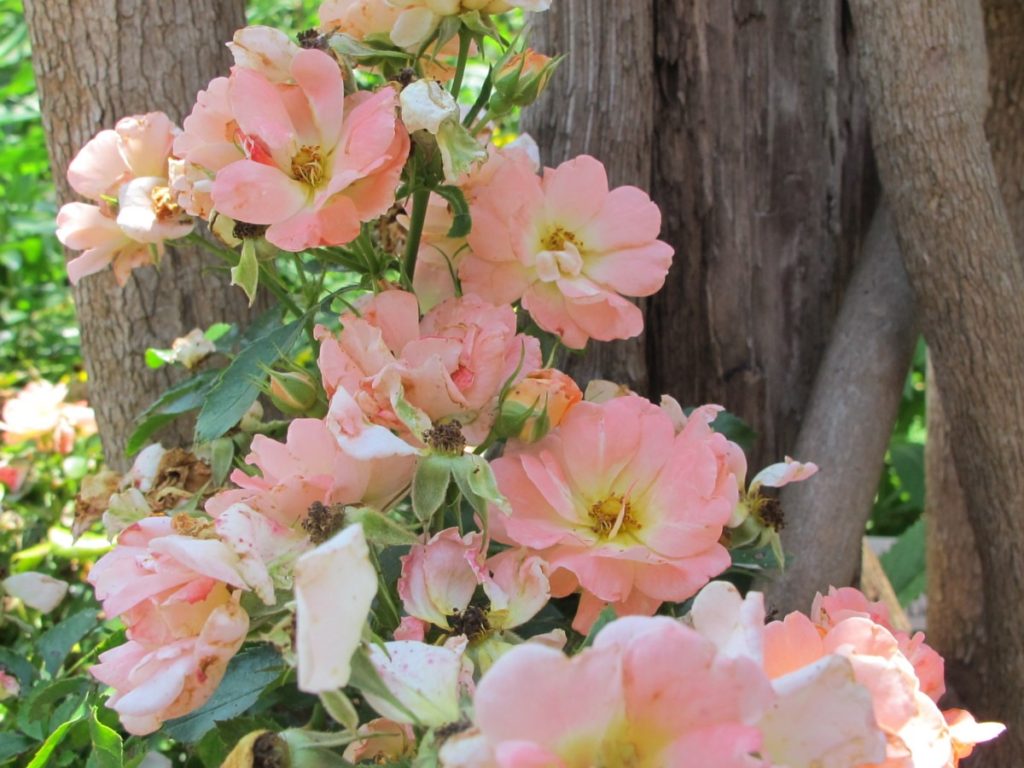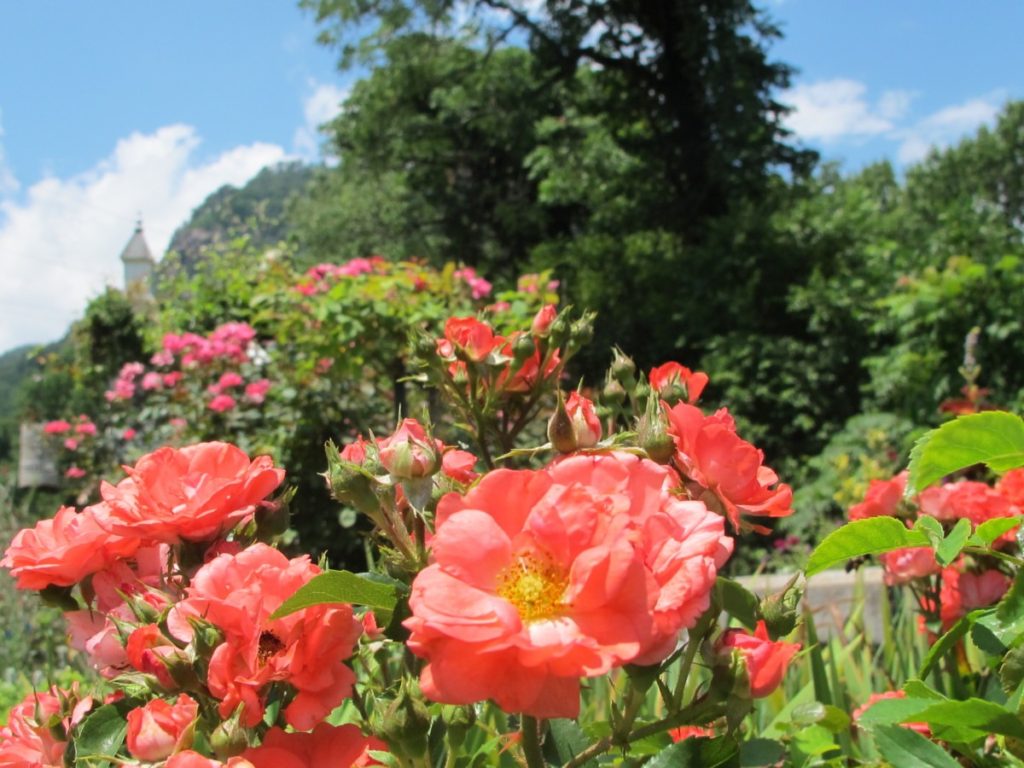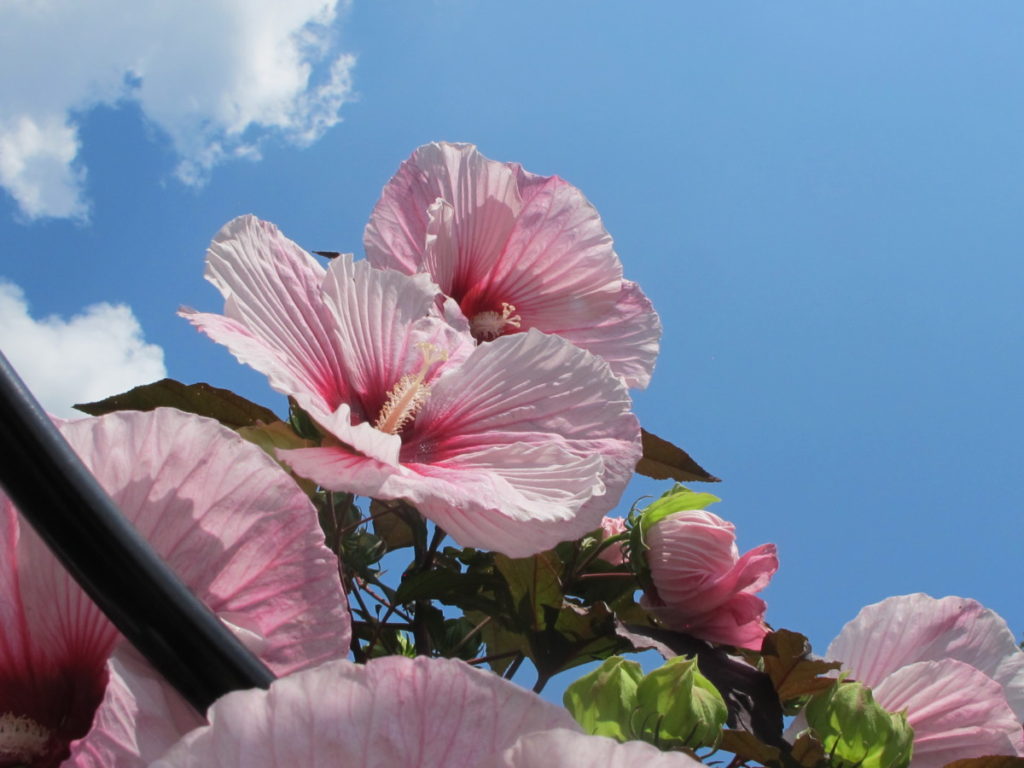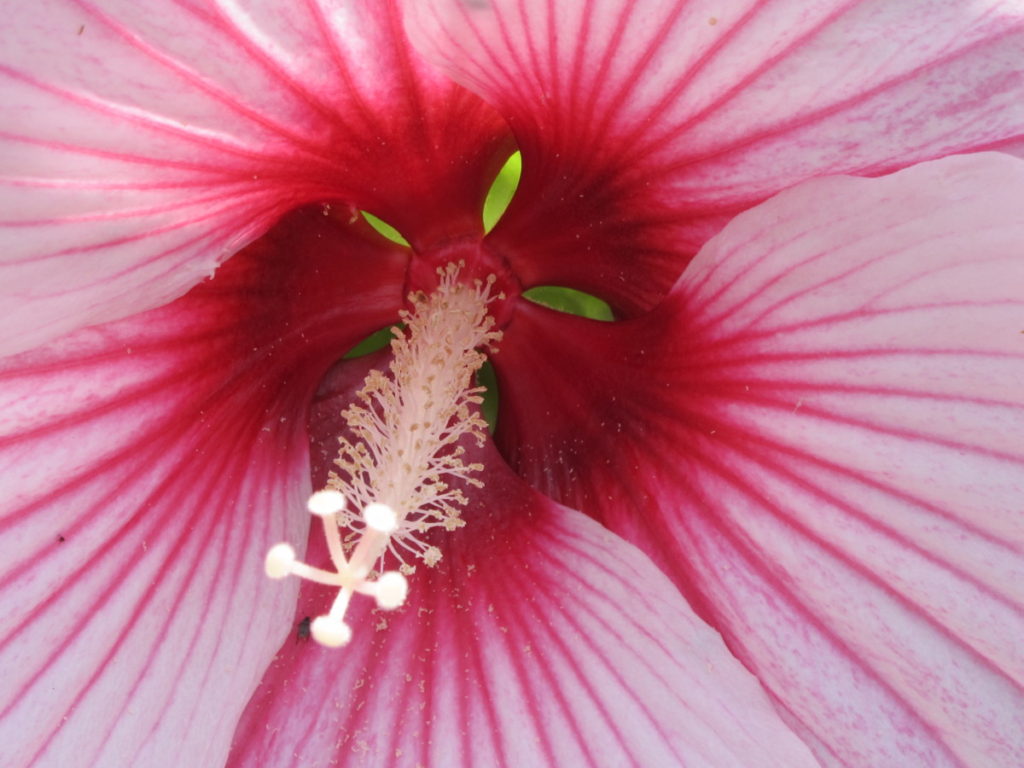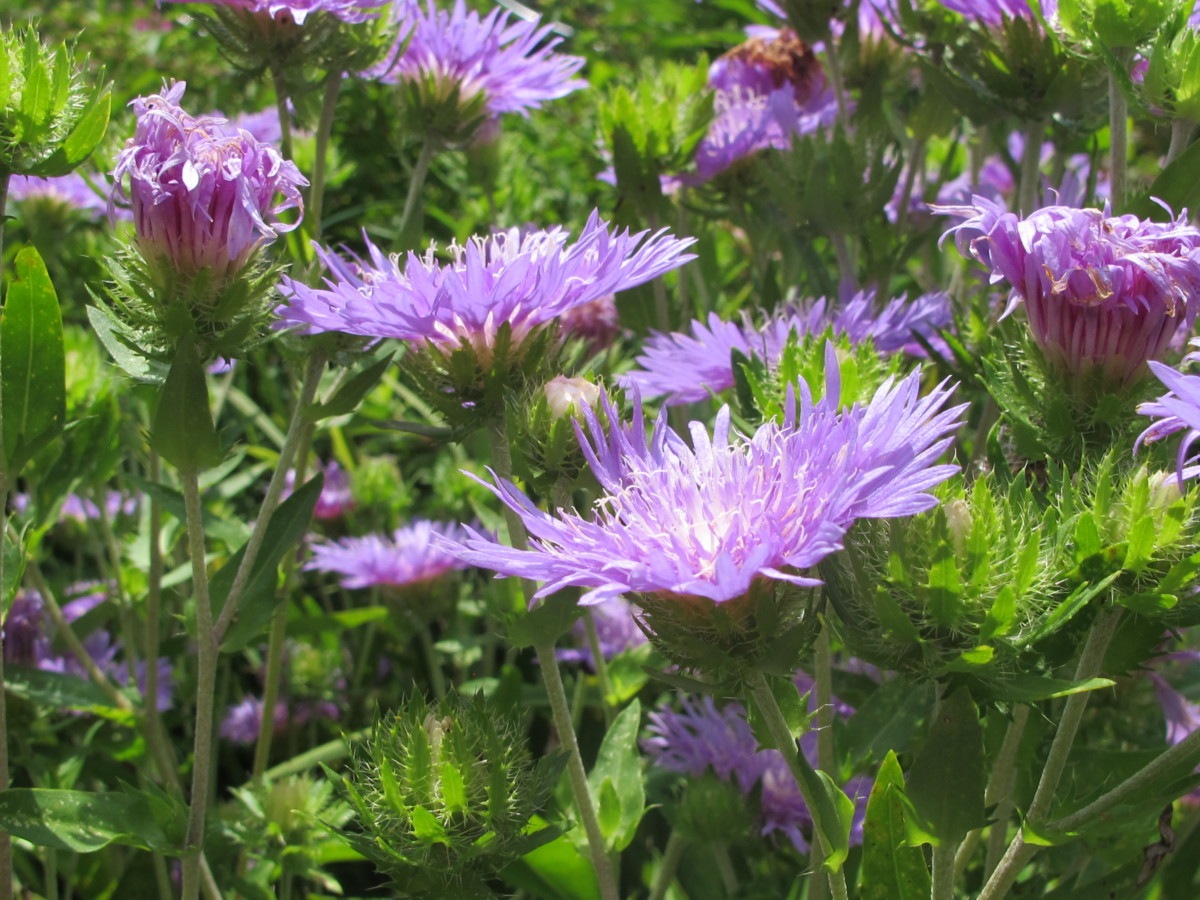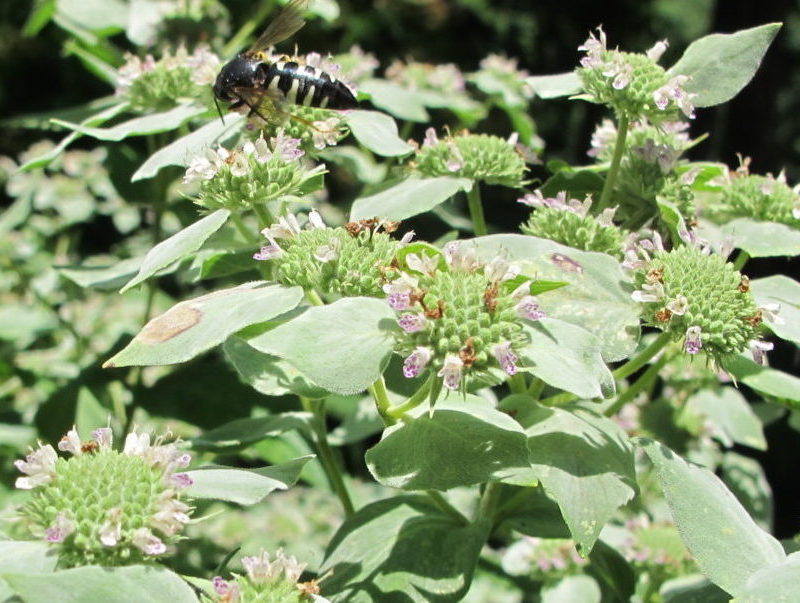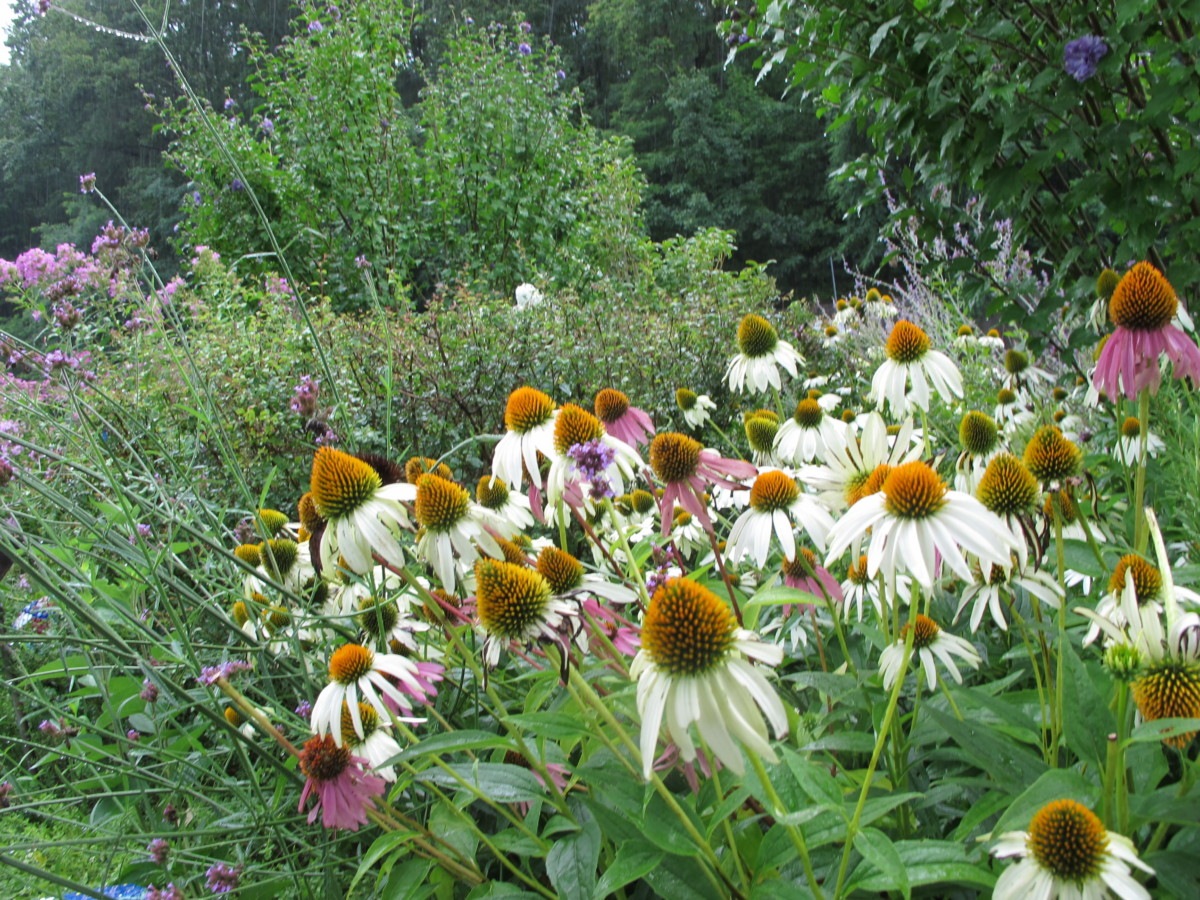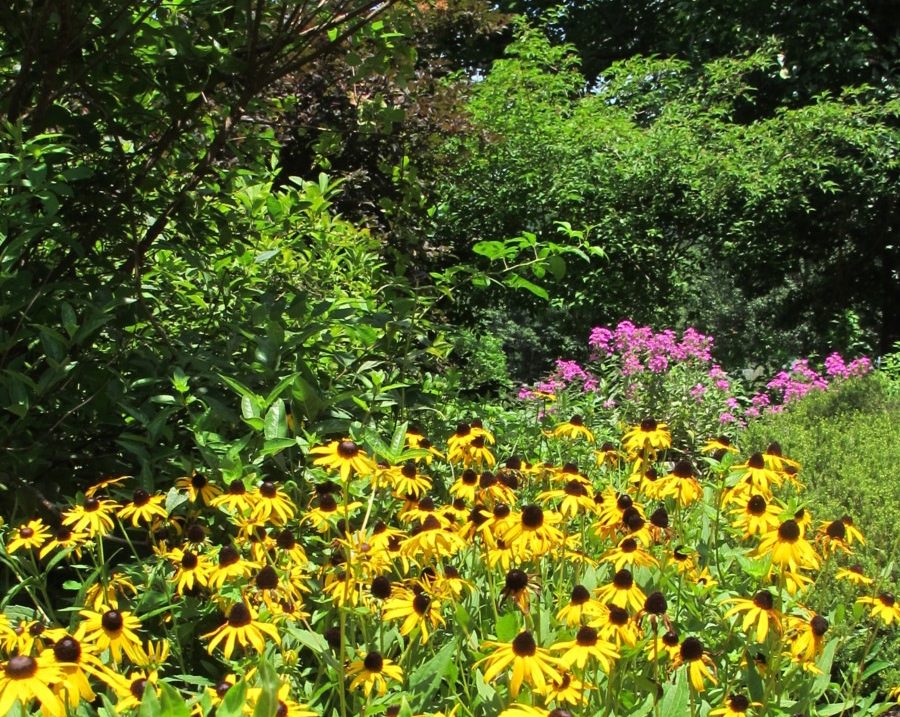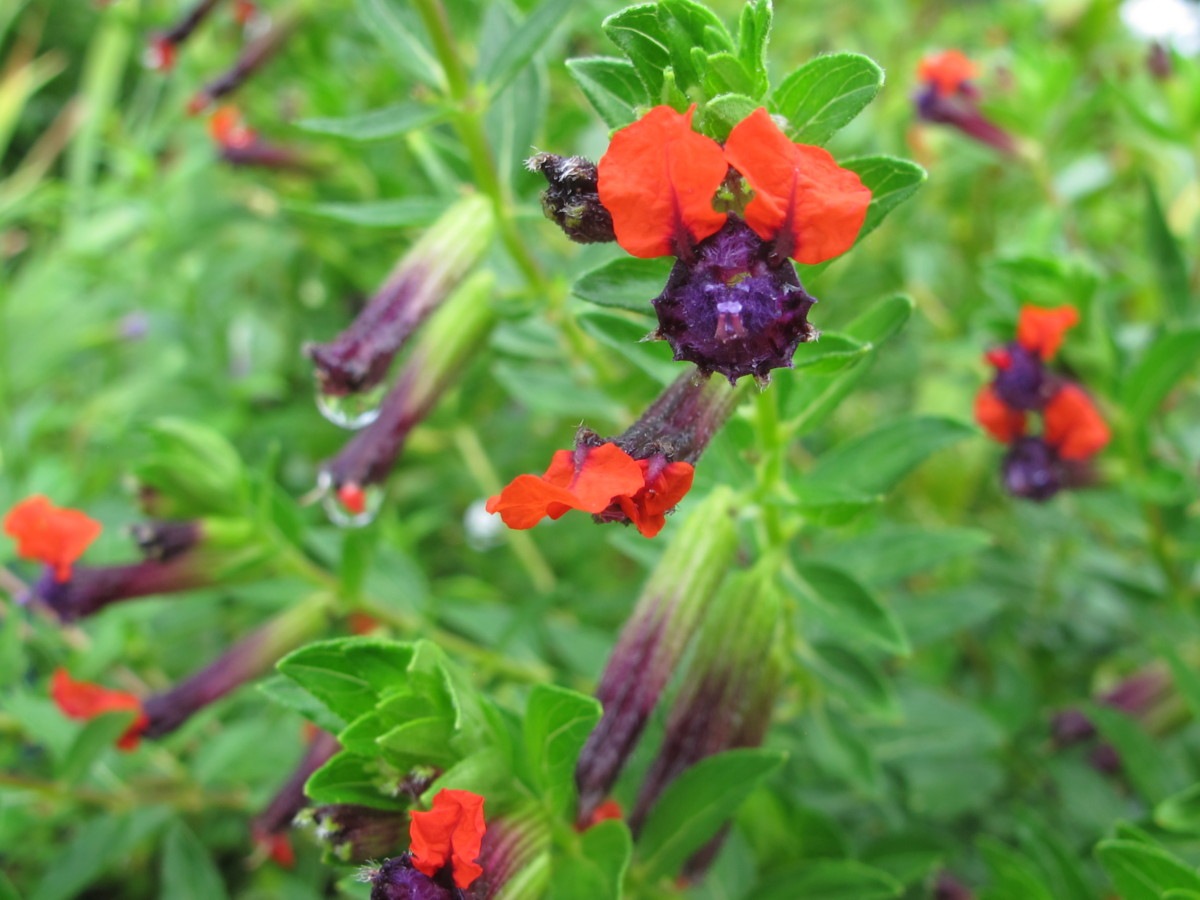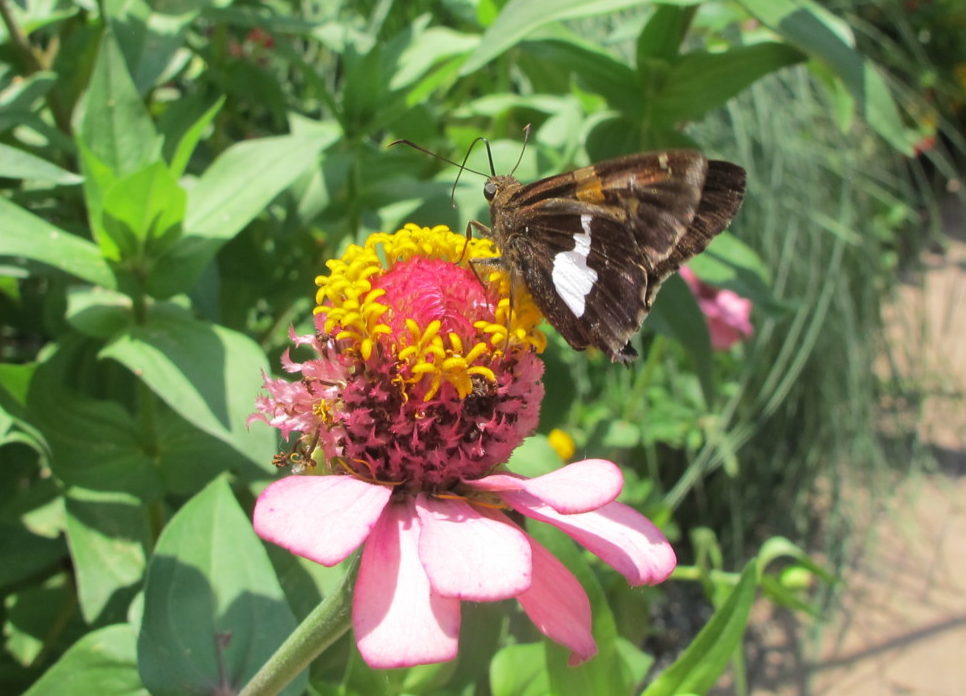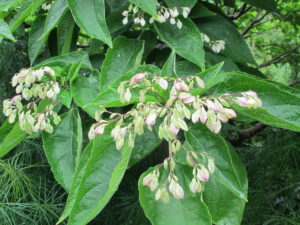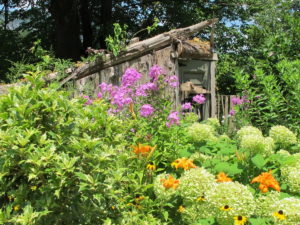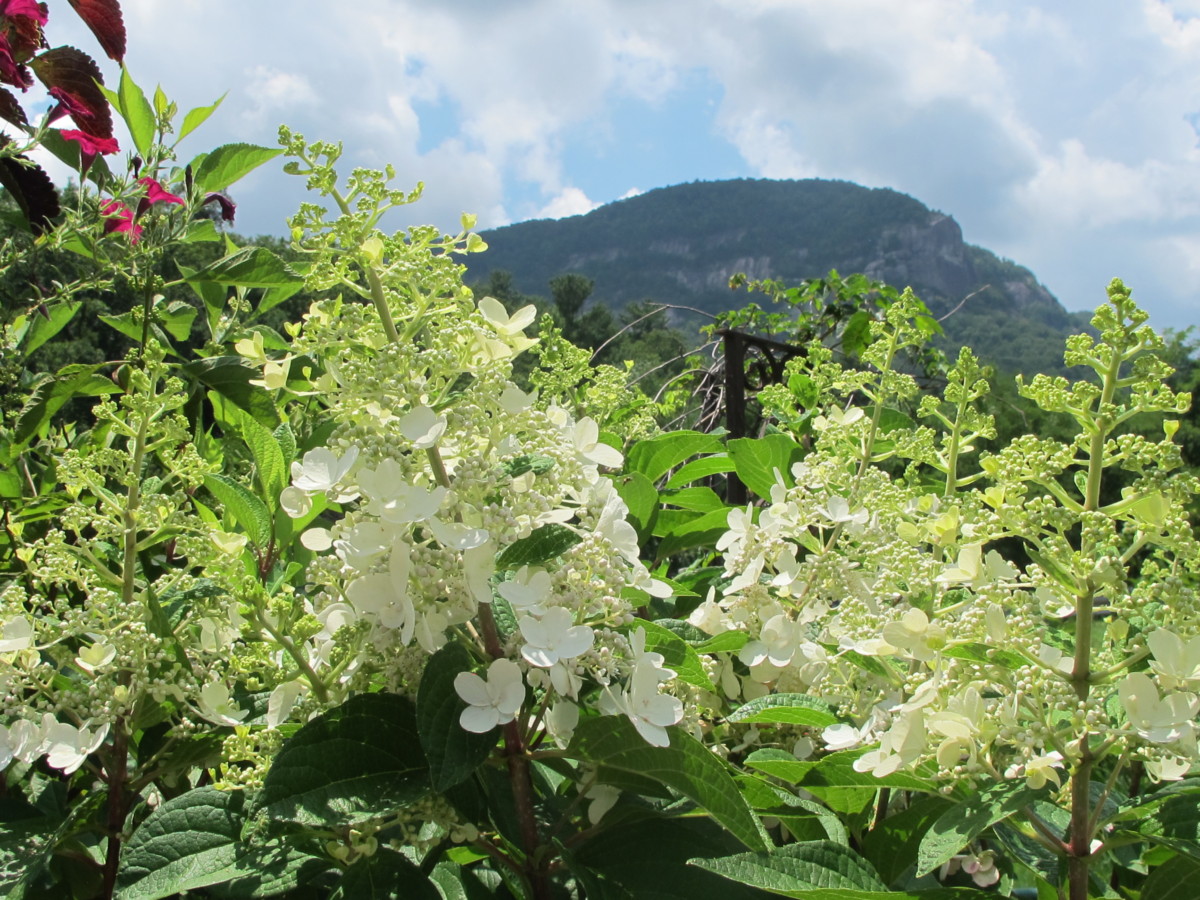2019
Updated 10/28/2024
An Early Summer Visit To The Lake Lure Flowering Bridge
On Wednesday, I headed once again for the Lake Lure Flowering Bridge, hoping to find respite from this prolonged period of high humidity and temperatures in the mid 90’s. Yes, I could retreat to the air conditioned confines indoors. But that’s too close to the refrigerator. As usual…the mountains!
The first thing I noticed upon arrival was the missing huge maple (photo, right) at the end of the parking lot. It had a great rotten hollow at the base and was taken down as a precaution. It didn’t take long for someone to put a green roof on the stump and to invite The Bear to reside in the cozy void.
Another thing I noticed was that it wasn’t much cooler here than in Charlotte. Lake Lure sits at 1,000′ elevation, so I expected it to be a bit cooler. Regardless of the temperature, I needed pictures.
The New Information Station
The information station was stocked with all sorts of maps, diagrams, and mailboxes brimming with brochures since my last trip here. At that time, only the frame had been built. The volunteers at The Lake Lure Flowering Bridge do an excellent job informing the public.
It doesn’t matter whether you’re an avid gardener or a beginner; the flowering bridge is simply a wonderful place to enjoy plants or to walk through on your way to the lake or to lunch in Chimney Rock, just up the road half a mile or so. I met two friendly ladies here, in the shade—a volunteer who plants herbs in the garden and a visitor enjoying a private tour.
- Information printouts.
- Butterflies.
- Birds.
- Bees.
- The information station.
- A map of the gardens.
Daylilies Galore At the Flowering Bridge
I don’t recall ever seeing as many beautiful daylily hybrids (Hemerocallis) on the flowering bridge. Some flowers were enormous! (Missing were cultivar identification tags. Next time, I’ll look more closely.) These perennials have sturdy flower scapes, and some have high bud counts.
Although each flower lasts only a day, you can see from the photograph of the double orange daylily that many buds have yet to open, and several scapes grow on each plant.
Peak Bloom at The Lake Lure Flowering Bridge
True blue balloon flowers (Platycodon grandiflorus) and their round buds invite inspection. Pink and white cultivars also are available, and dwarf types, such as ‘Sentimental Blue’.
Several varieties of hydrangeas boldly proclaimed their presence throughout the garden. Those with cone-shaped inflorescences, Hydrangea paniculata, include ‘Pinky Winky’, ‘Strawberry Vanilla’, and the popular ‘Limelight’. A few smaller mopheads (H. macrophylla) also grow on the flowering bridge.
Crocosmia, grown from bulbs native to South Africa, was in full golden bloom. Crocosmia, sometimes called montbretia, is hardy in zones 5 to 9 and is a member of the iris family (Iridaceae).
Dwarf butterfly bush, Buddleia davidii ‘Pugster Blue’, has strong stems and grows only about 2′ tall. It’s hardy to zone 5, growing in full sun and well-drained soil. Other colors are available in this series of small butterfly bushes. Most of these perennials were humming with pollinators—bees, wasps, moths, and butterflies.
- Dwarf butterfly bush ‘Pugster Blue’.
- Crocosmia.
- Hydrangea ‘Limelight’.
- Balloon flower.
Roses
The roses were in full bloom, and some had wonderful fragrance.
Hibiscus
Growing to about 4′ in height, Hibiscus ‘Starry Starry Night’ is a stunner with flowers up to 8″ across! They appear from midsummer to fall. Leaves are dark burgundy-black, with the deepest color in full sun. This one likes moist, well-drained soil, as most hibiscus plants do.
Hardy hibiscus grows in zones 4 to 9, and stems die to the ground in the colder zones. Apply a few inches of mulch under young plants before winter. Hibiscus is native to North America and is said to be deer resistant, but…
- H. ‘Starry Starry Night’.
More Native Perennials At the Flowering Bridge
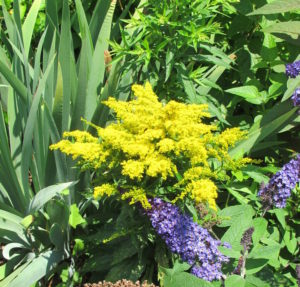
Early goldenrod next to the dwarf butterfly bush.
Goldenrods (Solidago) were just beginning to open in the flowering bridge garden, and will continue all summer. Their bright yellow flowers and those of the ‘Pugster Blue’ butterfly bush played well off each other, a nice combination.
Stokesia laevis, native to the southern U.S., likes acidic soil and remains evergreen in warmer regions. It tolerates drought when well established. Stokes aster grows to 2′ tall and blooms over a long period of time, in full sun.
Tickseed (Coreopsis), with its canary yellow flowers and finely textured foliage is always so pretty. When choosing coreopsis varieties for your garden, check their hardiness zones. Some do not tolerate frost. But, among the annual tickseeds, breeding efforts have come up with some spectacular new colors. The family Asteraceae includes around 80 species of coreopsis, all native to the Americas.
Stately clumps of billowing garden phlox (family Polemoniaceae) showed off their peak bloom. Bees, butterflies, hummingbirds, and other pollinators are attracted to these plants. Most of the 67 species are native to North America.
Mountain mint (Pycnanthemum muticum), zones 4 to 8, spreads rather invasively by rhizomes. This plant is a member of the Lamiaceae family, along with many other herbs. Its small pink flowers sit above silvery bracts. This plant can be used to make a mild tea. Kind of understated with its unusual flowers, but a strong pollinator magnet.
Black-Eyed Susan
The widely adaptable black-eyed Susan, Rudbeckia fulgida var. fugida, was in top form. Among my favorites of the hardy Rudbeckias, this variety is perfect for meadow, prairie, mass plantings, or clustered among the shrubs. Use it to highlight a garden around a lamp post or off the patio. And they’re well-suited in combination with ornamental grasses.
Deer are not especially fond of this variety, but they might take a bite now and then. They came in for seconds in the Maryland garden. Give them full sun or sun for 2/3 of the day and well-drained soil that doesn’t stay wet. The best thing about “Ruff” is its incredibly long bloom period. Although it begins flowering a short time after Rudbeckia ‘Goldsturm’, it blooms until frost, weeks longer than ‘Goldsturm’. Deadheading helps maintain the display.
- Coreopsis, one of the tickseeds.
- Stokesia.
- Mountain mint, Pycnanthemum, an invasive spreader.
- White and purple coneflowers, Echinacea purpurea cultivars.
- Garden phlox.
- Rudbeckia fulgida var. fulgida.
Annuals
Zinnia, lantana and ‘Bat Face’ Cuphea attracted pollinating insects. Although they will die with autumn frost, annuals give us the opportunity to plant different varieties each year. And they flower all summer. Although some varieties of lantana perennialize in zone 7, they’re usually planted only for the current season’s flowers. Coleus, grown for its colorful foliage, is another heat-tolerant annual.
Elephant ears (Colocasia) produce large tropical leaves from underground tubers. This garden had both the black and the green-and-black-mottled varieties. They’re perennial in warmer sections of zone 7, but I don’t know if they survive the winter in Lake Lure. Because cold winter air passes under the bridge, the soil is not as well insulated from temperature extremes as is garden soil.
- Cuphea ‘Bat Face’.
- California poppy, Eschscholzia californica.
- Lantana, next to the hot sidewalk.
- Zinnia with a silver-spotted skipper butterfly.
- Coleus echoes color in a red Hibiscus.
- Colocasia.
Styrax
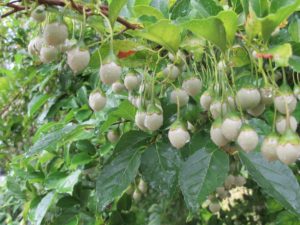
Styrax japonica seedpods.
A Japanese snowbell (Styrax japonica) that had been growing for 25 years in the Maryland garden was cut down by the family who bought the house from me. I loved that tree for it fragrant pendulous white flowers and for the umbrella-shaped canopy. It’s a great tree for shading a sunny patio. C’est la vie.
That tree in Maryland seeded heavily, but there never were many seedlings popping up in the bed below it. I did, however, gather a few, germinated them, and then brought them with me to North Carolina, where the grounds maintenance crew whisked them away with the loropetalum trimmings…
This species of styrax has many ornamental features in addition to the flowers and habit—the fruits will split open later in the season, revealing shiny brown seeds. The leaves and twigs are fine in texture, and it has a pleasing horizontal branching pattern. A perfect small tree!
Osmanthus
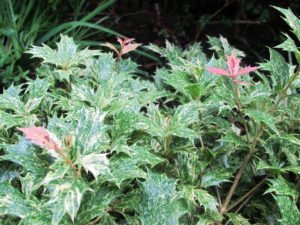
False holly, Osmanthus heterophyllus ‘Goshiki’.
Osmanthus heterophyllus ‘Goshiki’ has variegated leaves, with some pink at the tips of the stems. ‘Goshiki’ means “5 colors”—white, creamy yellow, gold, pink, and green—for the different hues that appear in the somewhat spiny leaves.
Plant in full sun, or in morning sun in hot zones, and in moist soil. Strong, hot sun will burn the tender new foliage or the white parts of the leaves.
This Asian native is hardy in zones 6 to 9. Use it in mass plantings or as a specimen, in borders or in a bright woodland setting. Small flowers are fragrant. This compact evergreen grows 5′ to 7′ tall.
Peanut Butter Tree
What?! Yes, apparently, crushed leaves from this suckering tree from eastern Asia smell like peanut butter. Clerodendrum trichotomum (family Lamiaceae), more commonly called Harlequin Glorybower, grows in zones 7 to 10, and reaches 10′ to 20′ tall, and wider than that.
Hummingbirds and butterflies sip nectar from its flowers, which appear most of the summer. This large-leaved tree makes a bold statement in the landscape.
But If There’s Work To Do
A simple screen or workshop like this one can be constructed to hide the works of the garden—the compost pile, tools, and stacks of pottery. It defines the edge of the garden, and it also can hide the neighbor’s trash cans.
Incorporating structures into a landscape adds another dimension, enriching the experience. Finally, personalize with a green roof, interesting twigs and vines, and small hanging pots that express your whimsical side.
The Twig Chair
Here’s a great place to rest after the day’s transplanting and weeding, surrounded by peace and beauty. With iced tea, some magazines, and the family dog for company, it’s a great way to spend a summer afternoon. All that’s missing is the “Please do not disturb” sign.
Every time I visit the Lake Lure Flowering Bridge, something new is in bloom, or one of the sections has been completely replanted. It’s only about an hour and a half from Charlotte, and there are plenty of restaurants and mom-and-pop shops to make this area a delightful way to spend the day.
Bring the kids; a Merry-Go-Round and other children’s activities are only a mile away in the Village of Chimney Rock. There are lots of reasons for returning to the Lake Lure Flowering Bridge over and over again!
- Sit…relax…observe.
- Granite outcrops around Lake Lure.
Hurricane Helene

This section added 10/7/2024:
***Update***: Hurricane Helene and the resulting floods and landslides scoured the western North Carolina mountains and other regions in the southern Appalachian Mountains for a few days on and after 9/27/2024. It destroyed small towns, roads, bridges, and people’s lives. Around 100 people died and many more are missing in NC alone. Heroic efforts are being made by individuals, churches, and charitable organizations to assess the damage, bring food, water, and communication to trapped families, and to begin the process of mitigating the damage and rebuilding.
Most shops and restaurants in Chimney Rock have been washed downstream to Lake Lure. From what I’ve seen in news coverage, the Lake Lure Flowering Bridge has been reduced to the only remaining feature: part of the concrete balustrade at the edge of the bridge (as in the photo at the top of this article).
Mark Huneycutt documented what he has seen, and here’s one of his videos:
I walked to Chimney Rock for answers… Hurricane Helene Aftermath – YouTube
Rescue operations request that you not venture to the area on your own, even if offering help and supplies. The ground is unstable, and you could end up being one of those needing rescue, so leave it to the professionals. Ask them if you can help.
Please, generously donate money and requested goods to legitimate rescue operations. I donated to Samaritan’s Purse and will forward a portion of my proceeds earned at the farmers’ markets. Samaritan’s Purse, headquartered in the area, has tractor trailers, machinery, supplies, and an army of dedicated volunteers. They are doing a fantastic job, so please help them in their efforts. Thank you.
Added 10/28/2024:
This video demonstrates hope, determination, and generosity in the face of a devastating life-changing event. I also have donated to hurricanehelenewnc.com from my revenues at Wellspring Gardens (Elkin NC farmers’ market):
Asheville is Worse than We Realized – Can They Rebuild?
Thank you again.
